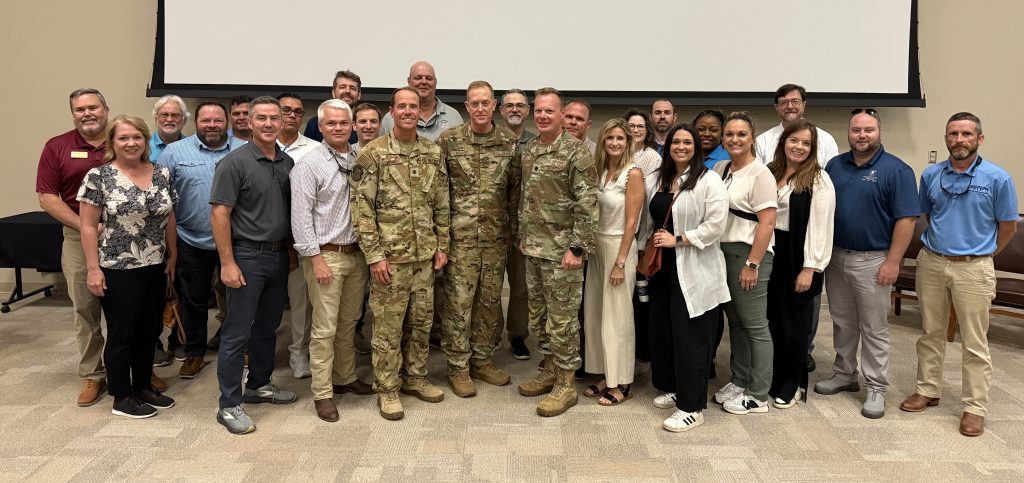
The June 18th Masters Leadership Program session took participants behind the scenes of some of Mississippi’s most strategic and future-facing military installations—deepening our understanding of their economic, tactical, and technological significance, and laying the groundwork for how we, as regional leaders, can support and elevate them.
The June session focused on one key theme: Mississippi is not just a military state—it’s a force multiplier for national defense. From the Combat Readiness Training Center (CRTC) in Gulfport to Camp Shelby Joint Forces Training Center in Hattiesburg, participants saw firsthand how these institutions operate, innovate, and prepare thousands of U.S. and allied warfighters for today’s multidomain battlespace.
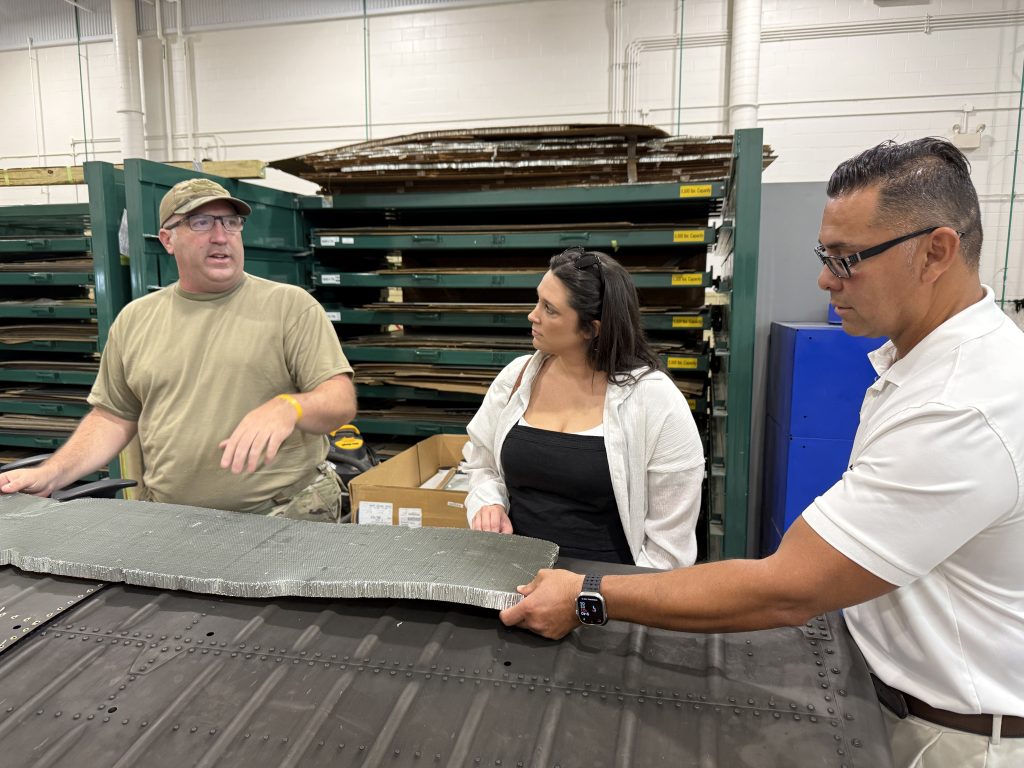
Caption: Masters Leadership participants learn about sheet metal repair.
Combat Readiness Training Center (CRTC)
The day began at Gulfport-Biloxi International Airport, where Colonel Robert Brady, Lt. Col. Brian Mattox, and the leadership team at CRTC welcomed the group for a briefing and tour of their operations.
The Gulfport CRTC is one of only four Combat Readiness Training Centers in the country and has earned a reputation as one of the most dynamic and agile. Certified as a Joint National Training Capability (JNTC) since 2010 and SSTK accredited since 2017, the facility trains 50,000–60,000 warfighters annually, including Air National Guard, active-duty personnel, special forces, and allied partners from around the globe.
CRTC’s dual mission—federal military readiness and state-led disaster response—positions it as a key player in both national security and emergency preparedness. It also serves as a FEMA response hub, having hosted over 6,000 responders during Hurricane Katrina relief efforts.
Facility Highlights
- 28,000 sq. ft. hangar with 11,000 sq. ft. of shop space
- 130,000+ sq. yds. of apron space for aircraft
- 19 billeting buildings with capacity for ~1,000 personnel
- 21-lane small arms range (.50 cal capable)
- 3 auditoriums (up to SECRET-capable), 9+ classrooms for 530+ trainees
- SCIF-capable conference rooms and SAPF facilities
The CRTC’s partnerships span across Camp Shelby, Keesler AFB, Stennis Space Center, Port of Gulfport, and out-of-state users like the 187th Fighter Wing (F-35s) and 159th Fighter Wing (F-15s). Demand is growing, especially with 300+ F-35s coming online and oversaturation of existing ranges in other states.
“If you build it, they will come,” one commander noted. “And Mississippi built it.”
CRTC is currently working to expand its airspace and training capabilities—including the creation of permanent threat environments, Electronic Warfare (EW) capabilities, and a Sensitive Compartmented Information Facility (SCIF) to meet the increasing demands of fifth-generation warfare and AFFORGEN (Air Force Force Generation) certification.
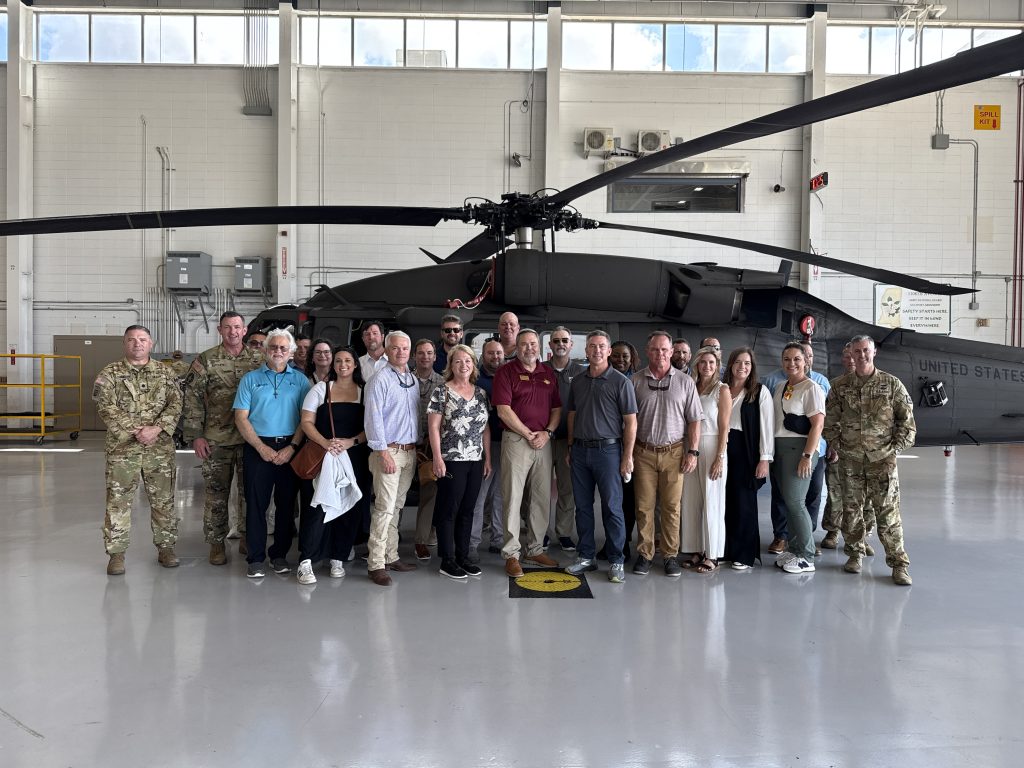
Caption: The Masters Leadership class posing in front of a recently repaired helicopter at Gulfport CRTC.
AVCRAD & TASMG: The Medics of Aviation
Next, the group toured the 1108th Aviation Classification and Repair Activity Depot (AVCRAD) and Theater Aviation Sustainment and Maintenance Group (TASMG)—where aircraft get a second life.
This facility, often referred to as the “medics of aviation,” specializes in the repair and overhaul of rotary wing aircraft, aviation life support systems, and other mission-critical parts. Their work not only keeps aircraft flying—it saves taxpayers over $40 million annually by repairing instead of replacing.
Operating since 1939, AVCRAD also uses cutting-edge technologies like 3D printing to enhance aviation logistics, working in lockstep with defense innovation goals and Mississippi’s growing advanced manufacturing footprint.
Picture
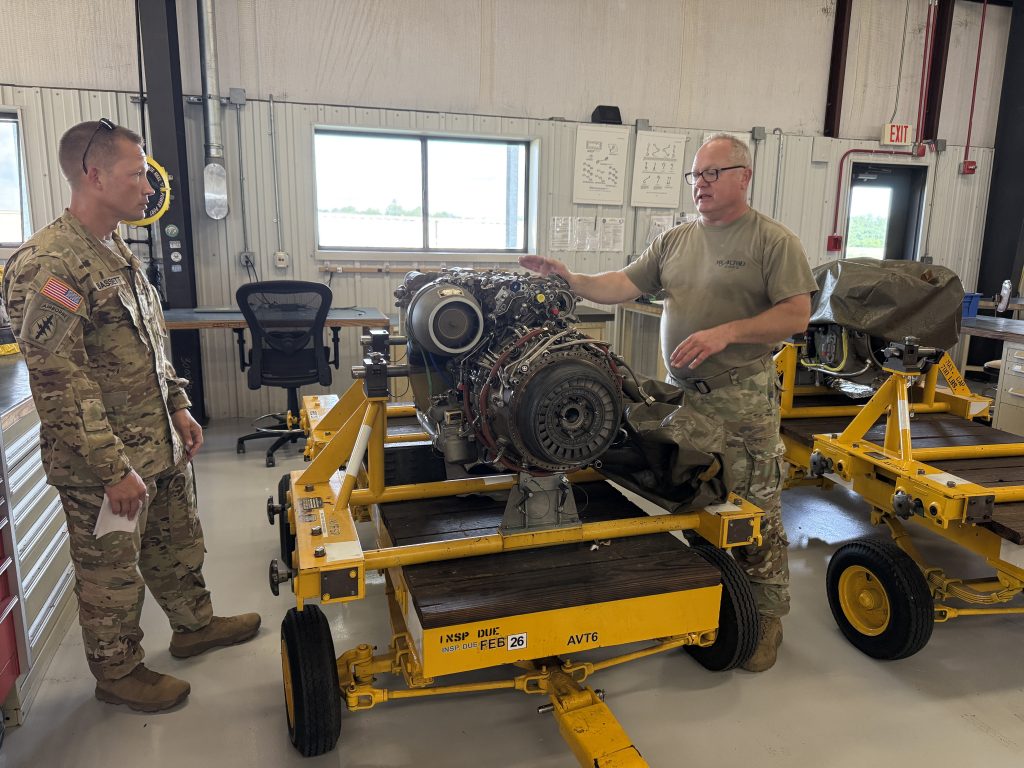
Caption: A recently repaired engine from the Medics of Aviation.
Camp Shelby Joint Forces Training Center
After a short drive to Hattiesburg, the afternoon focused on the sprawling, 136,000-acre Camp Shelby Joint Forces Training Center—the largest mobilization and training center in the U.S. National Guard system.
Since 1917, Camp Shelby has prepared over 100,000 warfighters annually from across all branches of the military, as well as allied forces from the UK, Belgium, Canada, Taiwan, and beyond. The site is also a key player in Large Scale Mobilization Operations (LSMO), disaster response, and multi-domain operational (MDO) training.
Participants heard from Camp Shelby leadership, then toured the Mississippi Armed Forces Museum and explored Camp Shelby’s extensive range and simulation facilities—including the Urban Warfare Training Center, dense urban terrain ranges, air-ground training zones, and electronic warfare labs.
Premier Training Capabilities
- Over 34 small arms and mounted ranges
- Integrated UAS launch & recovery sites
- Air-ground training with F-35, F-16, A-10, AC-130, FA-18
- C-17 capable runways
- Signal, cyber, and electromagnetic warfare environments
- Dense urban terrain simulations and tunnel systems
- Advanced logistics hub with rail access, 9,200+ beds, and aviation fuel services
More than just a base, Camp Shelby is a living laboratory for innovation—one that’s actively pursuing over $150 million in infrastructure upgrades, including energy efficiency, microgrid construction, fiber networks, SCIF development, and training area modernization.

Caption: A Masters Leadership program participant touring the Mississippi Armed Forces Museum at Camp Shelby.
Innovation in Action: Dr. Henry Jones & DS4D
During our session at Camp Shelby, we heard a compelling briefing from Dr. Henry Jones of the University of Southern Mississippi, home to Designing Solutions for Defense (DS4D) and one of the few institutions nationwide authorized to run the Hacking for Defense (H4D) program.
H4D invites the nation’s brightest minds to solve the Department of Defense’s toughest challenges—through agile thinking, entrepreneurship, and cross-sector collaboration. USM’s involvement puts Mississippi on the map as a national leader in defense innovation and positions our region as a potential anchor in the Center of Excellence for National Security, a statewide vision for coordinated R&D, training, and advanced defense capabilities.
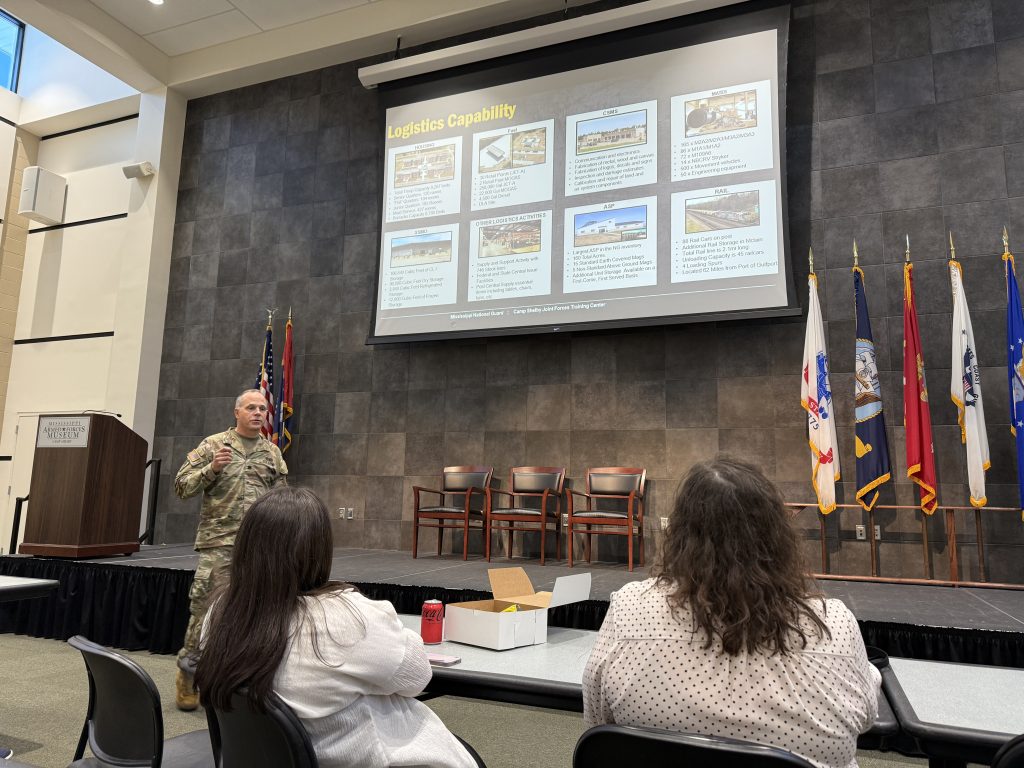
Caption: Masters Leadership participants hear about Camp Shelby’s logistics capabilities over lunch.
What This Means for the Gulf Coast
The June session directly supports the mission of the 2025 Masters Program: to establish and empower the South Mississippi Defense and Military Affairs Council (SMDMAC). This council will work in tandem with the Governor’s Office of Military Affairs (GOMA) to support our regional bases and defense partners—not just through policy, but through community development, business engagement, and workforce growth.
As we look ahead to our next session in Warner Robins, Georgia, participants will explore best-in-class examples of military community partnerships, giving us a blueprint to shape our own defense-forward ecosystem here on the Coast.
Mississippi’s military installations are more than defense hubs. They’re economic engines, innovation labs, and global force multipliers. Through the Masters Leadership Program, we’re learning how to support them—not just as neighbors, but as strategic partners in a shared mission.

